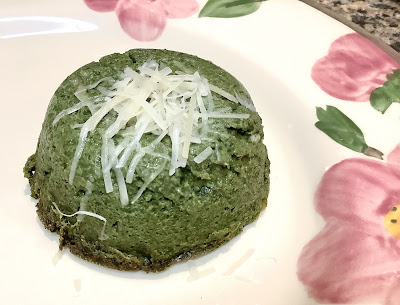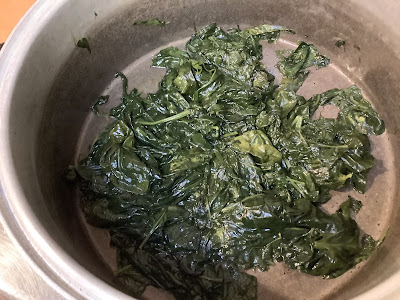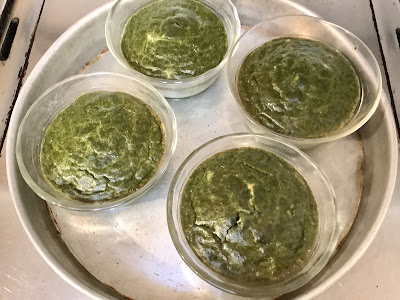
Recipe: Simple spinach timbales make a delicious side dish
 |
|
Spinach timbale is an easy and delicious side dish.
(Photos: Debbie Arrington)
|
Timbales sound fancy (and some are). This simple version shows off one of our favorite spring vegetables – spinach.
We love our spinach on the Left Coast. Jeanne Voltz (a.k.a. Marian Manners), the Los Angeles Times food editor and columnist during the 1950s and '60s, noted that this leafy green was popular with both home cooks and chefs.
“Californians eat spinach with no prodding at all,” she wrote in “The California Cookbook,” a 1970 compilation of Golden State favorites. “The most deluxe restaurants serve enormous quantities of creamed spinach.”
This recipe is a modified version of a throwback. Along with several other spinach recipes, Spinach Timbales were featured as an alternative to ubiquitous creamed spinach in the 1949 “Sunset Cook Book of Favorite Recipes.” (I’ll save that book’s Taxco Spinach-Stuffed Pancakes for another day.)
Timbales got their French name from their shape; it’s derived from the French word for “kettledrum.” Custard cups or other similarly shaped molds work great.
Timbales may have crusts that act as the mold for the rich ingredients inside. The most simple (such as this) are crustless egg custards blended with other ingredients and steamed or baked in a water bath.
Before puréeing, cook your spinach with as little water as possible.
 |
|
Sautéeing the spinach in a little olive
oil is one way to cook it with little water.
|
Spinach timbales
Makes 4 servings
Ingredients:
1 cup cooked spinach, puréed
2 eggs, beaten
½ cup cream
1 scallion, finely chopped (including some green leaves)
¼ cup Parmesan cheese, shredded
1/8 teaspoon hot pepper sauce
1/8 teaspoon pepper
1/8 teaspoon mace or nutmeg
Butter, margarine or non-stick spray
Instructions:
Butter or grease 4 molds or custard cups. Set aside.
Preheat oven to 350 degrees F.
Bring 2 cups water to boil, then turn off heat.
In a mixing bowl, combine puréed spinach, eggs, cream, scallion, Parmesan cheese, hot sauce, pepper and mace or nutmeg until blended. Spoon mixture into prepared molds or custard cups.
Place filled molds or cups in a deep-dish pie pan (or similar pan) and place pan on oven shelf. Carefully fill pan halfway with hot water around the molds or cups (it may not take all 2 cups).
Bake at 350 degrees until the timbales are set and, when tested, a thin-bladed knife comes out clean, about 35 to 40 minutes. Let rest 5 minutes.
To unmold, run a thin-bladed knife along the inside of the mold or cup. Carefully invert over plate.

Comments
0 comments have been posted.Sacramento Digs Gardening to your inbox.
Sites We Like
Garden Checklist for week of July 21
Your garden needs you!
* Keep your vegetable garden watered, mulched and weeded. Water before 8 a.m. to reduce the chance of fungal infection and to conserve moisture.
* Feed vegetable plants bone meal, rock phosphate or other fertilizers high in phosphate to stimulate more blooms and fruiting. (But wait until daily high temperatures drop out of the 100s.)
* Don’t let tomatoes wilt or dry out completely. Give tomatoes a deep watering two to three times a week.
* Harvest vegetables promptly to encourage plants to produce more. Squash especially tends to grow rapidly in hot weather. Keep an eye on zucchini.
* Pinch back chrysanthemums for bushy plants and more flowers in September.
* Remove spent flowers from roses, daylilies and other bloomers as they finish flowering.
* Pinch off blooms from basil so the plant will grow more leaves.
* Cut back lavender after flowering to promote a second bloom.
* It's not too late to add a splash of color. Plant petunias, snapdragons, zinnias and marigolds.
* From seed, plant corn, pumpkins, radishes, winter squash and sunflowers.